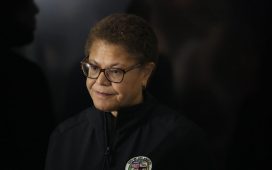A drop-off in auto sales usually sends incentives soaring and profits plummeting. Not in 2020, amid the biggest one-year decline in U.S. light-vehicle sales since the Great Recession.
Instead, tight inventory levels resulted in smaller discounts and a stronger bottom line for many automakers and dealers. In December alone, the industry made an extra $840 million from lower incentive spending, according to J.D. Power, yet the fourth quarter saw the smallest sales decline of the year — down 2.4 percent from the last three months of 2019.
Consumer automotive spending rose 10 percent in the fourth quarter, even as incentives declined and average transaction prices climbed, J.D. Power said.
“Price increases [with] a very strong retail environment produced a lot of dollars in the market,” Tyson Jominy, vice president of data and analytics at J.D. Power, told Automotive News. “A 10 percent gain in what consumers are spending is just massive.”
U.S. light-vehicle sales fell 14 percent to 14.6 million, according to the Automotive News Data Center. That’s the lowest volume since 2012. Just four brands — Bentley, Volvo, Alfa Romeo and Mazda — of the 30 that report U.S. results managed increases.
Even with sales down 2.5 million from 2019, the industry largely avoided the disaster that seemed to be materializing in the spring, when many dealerships temporarily closed and automakers halted production for eight weeks.
In December, the average transaction price surged 8 percent to a record $38,000, J.D. Power said. The inventory strain pushed incentives down to 9 percent of sticker price, or about $4,000, a 19 percent drop from April, when automakers rolled out no-interest, seven-year loans to stoke demand.
Automakers entered 2021 enjoying lower incentives, rising transaction prices and growing inventory. “The industry profitability is going to be off the charts,” Jominy said.
While retail demand has bounced back, cutbacks in fleet orders continued to drag on the industry as rental-car companies needed fewer vehicles.
For Hyundai Motor America, retail sales grew 3.2 percent in the fourth quarter, but fleet sales sank 27 percent.
“We’re seeing our fleet partners come back into the game slowly but surely,” said Randy Parker, vice president of national sales for Hyundai Motor America. “It’s certainly far from where it was last year, but we are seeing signs of recovery.”
Industrywide, fleet accounted for 14.7 percent of total sales, compared with 18.7 percent in 2019, according to J.D. Power and LMC Automotive, but a stronger recovery could come soon, Jominy said.
“To close out the year, fleet was a little bit stronger than we thought. So perhaps it’s already starting to come around,” he said.
LMC and Cox Automotive are forecasting light-vehicle sales of 15.7 million in 2021, which would be about 7 percent higher than last year but still down from 17.1 million in 2019. December’s employment numbers showing a loss of 140,000 jobs — the first decline since April — suggest the economy remains fragile.
“Autos will face a higher concentration of challenges in the first half of 2021 from uncertainty surrounding vaccine rollout, the Biden administration and restrictions that remain in place in several states as winter takes hold,” Jeff Schuster, president of LMC’s Americas operations and global vehicle forecasts, said in a statement.
Although inventory has increased since summer, dealers had 17 percent fewer days’ worth than in December 2019, according to Cox Automotive. Automakers are making up lost production, but virus outbreaks could disrupt the supply chain, said Charlie Chesbrough, Cox’s senior economist.
“The inventory situation is better, but it still remains relatively tight,” said Chesbrough. “This inventory issue may hold back the vehicle market through the course of this year.”
Laurence Iliff and Jackie Charniga contributed to this report.







